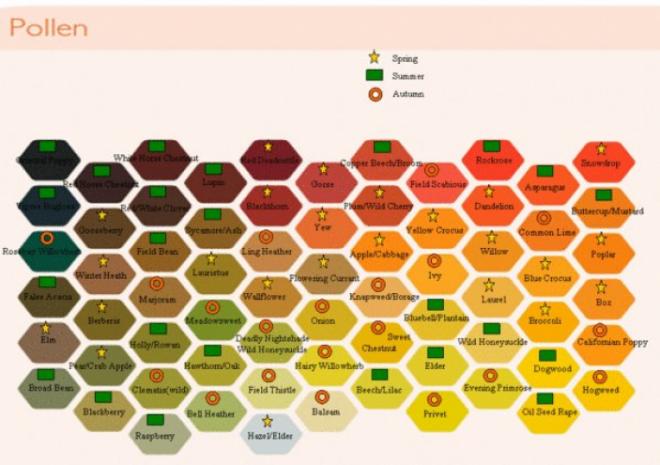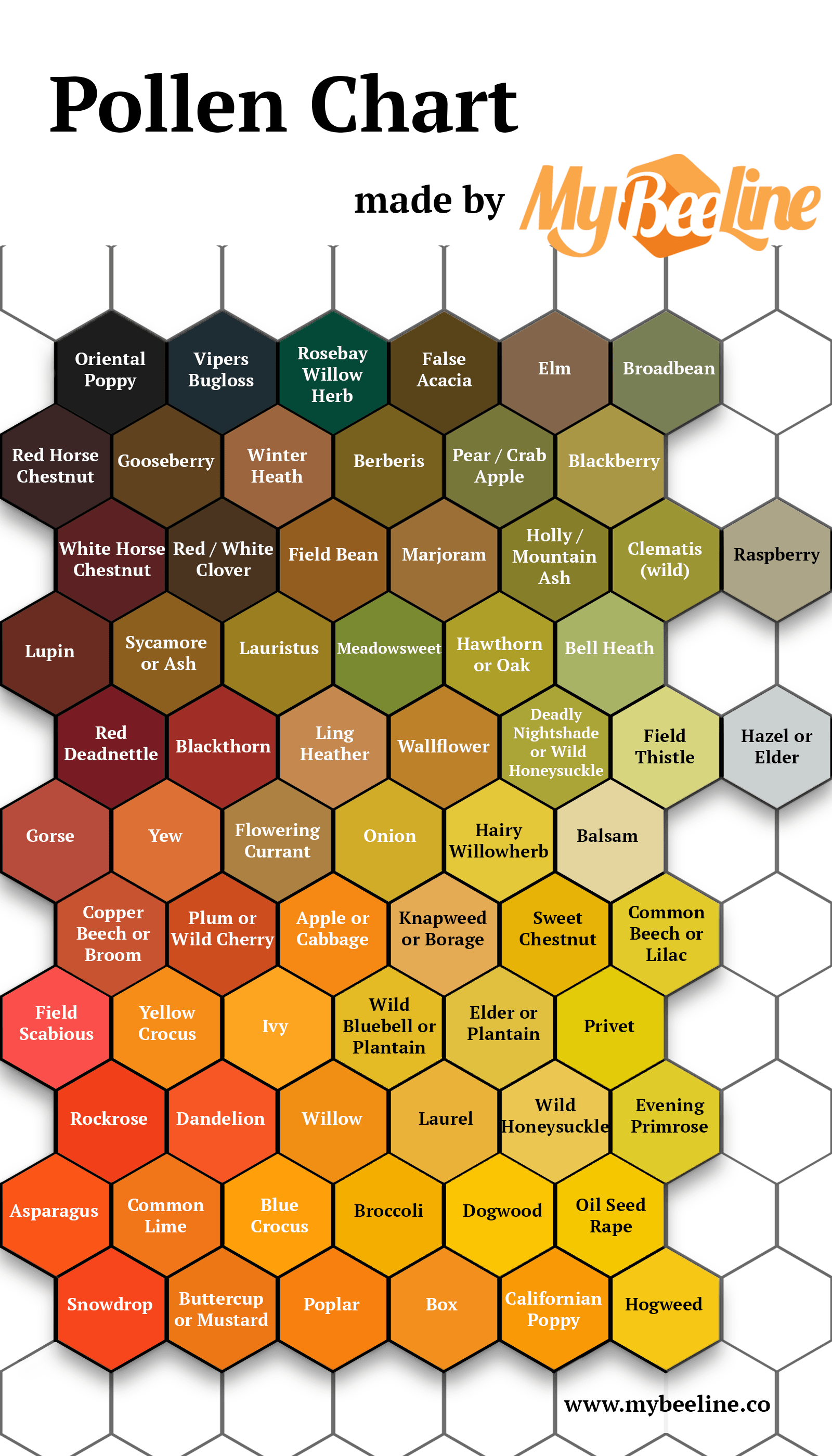The term pollen source is often used in the context of beekeeping and refers to flowering plants as a source of pollen for bees or other insects. Bees collect pollen as a protein source to raise their brood. For the plant, the pollinizer, this can be an important mechanism for sexual reproduction, as the pollinator distributes its pollen. Few flowering plants self-pollinate; some can provide their own pollen (self fertile), but require a pollinator to move the pollen; others are dependent on cross pollination from a genetically different source of viable pollen, through the activity of pollinators.
The pollen source in a given area depends on the type of vegetation present and the length of their bloom period. What type of vegetation will grow in an area depends on soil texture, soil pH, soil drainage, daily maximum and minimum temperatures, precipitation, extreme minimum winter temperature, and growing degree days.
The color of pollen indicates the color as it appears when the pollen arrives at the beehive. Bees mix dry pollen with nectar and/or honey to compact the pollen in the pollen basket. Did you know that Flowers’ Aroma can calm the most aggressive of bees?
Honey bees gather pollen and in “pollen baskets” on their hind legs that are actually small concave areas surrounded by hair-like bristles called setae. As the bee forages, pollen grains collect on its head. The bee then uses its front legs to transfer the pollen to the pollen baskets.
You may have noticed that the color of the pollen basket varies. depending on the specie of plant from which the bees are collecting the pollen, the pollen basket can appear white or even dark blue.
If you’re curious about the plant species from which your bees are collecting nectar and pollen, its possible to identify them by checking the color of the pollen basket and knowing what species might be in bloom at the time. For example, pollen from pear trees is reddish yellow, while that from borage is blueish grey and pollen from buckwheat is light green.
Fortunately, there is such a resource to help you identify pollen color: check out picture below or this link to a series of tables organized by plant type and season.
Pollen Chart

Updated photo of pollen chart

While we are on the subject, we want to encourage you to be nice to the bees in your area — plant some flower and trees in your garden that produce lots of pollen and nectar. Check out simple guidelines for planting a bee friendly garden